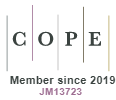Stability Analysis of the Corruption Free Equilibrium of the Mathematical Model of Corruption in Nigeria
DOI:
https://doi.org/10.15415/mjis.2020.82008Keywords:
Basic reproductive number, Corruption Free Equilibrium State, Mathematical Model, Corruption, Stability, Characteristic EquationsAbstract
In this paper, a mathematical model of the transmission dynamics of corruption among populace is analyzed. The corruption free equilibrium state, characteristic equation and Eigen values of the corruption model were obtained. The basic reproductive number of the corruption model was also determined using the next generation operator technique at the corruption free equilibrium points. The condition for the stability of the corruption free equilibrium state was determined. The local stability analysis of the mathematical model of corruption was done and the results were presented and discussed accordingly. Recommendations were made from the results on measures to reduce the rate of corrupt practices among the populace.
Downloads
References
Akinsola, V. O., Oluyo, T. O.: Mathematical analysis with numerical solutions of the mathematical model for the complication and control of Diabetes mellitus. Journal
of Statistics and Management systems 22(5), 845-869, (2019). https://doi.org/10.1080/09720510.2018.1556409
Binuyo, A. O.: Eigenvalue Elasticity and Sensitivity Analyses of the transmission dynamic model of corruption. Journal of the Nigerian Society of Physical Sciences
(1), 30–34, (2019).
Binuyo, Adeyemi O.: A deterministic model for the transmission dynamics of infectious diseases among infants. Elixir Appl. Maths 78, 29761–29764, (2015).
Driessche, P. van den, Watmough, James: Reproduction number and sub-threshold endemic equilibria for compartmental models of disease transmission. Mathematical Biosciences 180(12), 29–48, (2002). https://doi.org/10.1016/s0025-5564(02)00108-6
Eguda, F. Y., Oguntolu, F., Ashezua, T.: Understanding the Dynamics of Corruption using Mathematical Modelling Approach. International Journal of Innovative Science, Engineering & Technology, 4(8), 190–197, (2017).
Heesterbeck, J. A. P.: A brief history of R0 and a recipe for its calculations. Acta Biotheoretica 50(3), 189–204, (2002).
Okwuagbala, U. M. P: Corruption in Nigeria: Review, Causes and Solution, Hubpages Inc., California, United states, (2018).
Oyinlola, O. A.: Corruption Eradication in Nigeria; An Appraisal, Library Philosophy and Practice Hubpages Inc., California, United states, (2011).
Sirajo, Abdulrahman: Stability Analysis of the transmission dynamics and control of corruption. The Pacific Journal of Science & Technology 15(1), 99–113, (2014).
Transparency International, Corruption Perception Index, (2015).
Yusuf, I.: Controlling the spread of corruption through social media; a mathematical modelling approach. IOSR Journal of Mathematics 12(6), 75–81, (2016).
Downloads
Published
How to Cite
Issue
Section
License
Articles in Mathematical Journal of Interdisciplinary Sciences (Math. J. Interdiscip. Sci.) by Chitkara University Publications are Open Access articles that are published with licensed under a Creative Commons Attribution- CC-BY 4.0 International License. Based on a work at https://mjis.chitkara.edu.in. This license permits one to use, remix, tweak and reproduction in any medium, even commercially provided one give credit for the original creation.
View Legal Code of the above mentioned license, https://creativecommons.org/licenses/by/4.0/legalcode
View Licence Deed here https://creativecommons.org/licenses/by/4.0/
 |
Mathematical Journal of Interdisciplinary Sciences by Chitkara University Publications is licensed under a Creative Commons Attribution 4.0 International License. Based on a work at https://mjis.chitkara.edu.in |









